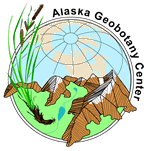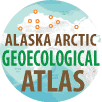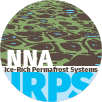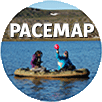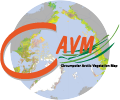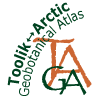
Teaching
BIOL F488/688, Arctic Vegetation Ecology: Geobotany (3 credits)
Course schedule and reading assignments
| Lesson | Dates | Topic | Reading assignments |
|---|---|---|---|
| see Reading Assignments for PDFs | |||
| Lecture 1 | Jan 17 | Introduction, Lecture 1 | Read syllabus |
| Lab 1 | Jan 17 | Plant identification: Overview of plant terminology guides dichotomous keys. Lab 1, Common Arctic trees and shrubs | Read Web site links to family characteristics for Pinacea, Betulaceae, Salicaceae. Plant identification: Trees (6 species) and tall shrubs (4 species) during lab. |
| Lecture 2 | Jan 22 | Overview of Arctic Ecosystems: The role of climate. Lecture 2 | Callaghan, T.V., Bjorn, L.O., Chapin III, F.S., et al. 2005. Chapter 7, Arctic tundra and polar desert ecosystems. Arctic Climate Impact Assessment - Scientific Report. Cambridge University Press. Cambridge. pp. 243-352. PDF This is an excellent summary of the current state of knowledge of Arctic terrestrial ecosystems. Use as a standard reference, skim it now, begin reading and complete by Mar 21. |
| Lecture 3 | Jan 24 | The role of permafrost and micro-topography. Lecture 3 | Bliss, L.C. 1997. Arctic Ecosystems of North America. Polar and Alpine Tundra. Elsevier. Amsterdam. Pp. 551-683. PDF Focus on p. 551-568. |
| Lab 2 | Jan 24 | Plant identification: low shrubs. Lab 2 | Read Web site links to family characteristics for Betulaceae, Salicaceae, Caprifoliaceae, Elaeagnaceae, Myricaeae, Rosaceae. Review required for low shrub species (13 species). |
| Lecture 4 | Jan 29 | The role of soils: pH, texture, moisture. Lecture 4 | 1. Tedrow, J.C.F. 1977. Chapter 9. The tundra zone and its soils, pp. 145-196, In: Tedrow, J.C.F. Soils of the Polar Landscapes. New Brunswick, NJ: Rutgers University Press. PDF 2. Bliss, L.C. 1997. Arctic Ecosystems of North America. Polar and Alpine Tundra. Elsevier. Amsterdam. Pp. 551-683. Focus on p. 551-539. |
| Lab 3 | Jan 31 | Plant identification: Arctic dwarf shrub. Lab 3 | Read Web site links to family characteristics for Betulaceae, Salicaceae, Cornaceae, Cupressaceae, Rosaceae, Ericaceae, Diapensiaceae, Empetraceae, Caprifoliaceae, Pyrolaceae Review required dwarf shrub species (24 species). |
| Lecture 5 | Feb 5 | Arctic terrestrial carbon budgets and biocomplexity of patterned ground 1. Lecture 5 2. Guidelines and grading criteria for oral presentations | 1. Walker, D.A., Epstein, H.E., Romanovsky, V.E., et al. 2008. Arctic patterned-ground ecosystems: A synthesis of field studies and models along a North American Arctic Transect. Journal of Geophysical Research - Biogeosciences. 113:G03S01. PDF 2. Walker, D.A., Kuss, P., Epstein, H.E., Kade, A.N., Vonlanthen, C.M., Raynolds, M.K. Daniels, F.J.A. 2011. Vegetation of zonal patterned-ground ecosystems along the North American Arctic Transect. Applied Vegetation Science, 14: 440-463. PDF |
| Lab 4 | Feb 7 | Plant identification: Review of all trees and shrubs. | Review all shrubs in the teaching collections. Make Flash Cards for Trees and Shrubs. Tree and Shrub Flashcards |
| Lecture 6 | Feb 12 | Toposequences and review climate, permafrost and substrate effects on vegetation. Lecture 6 | Catch up on reading. |
| Lab 5 | Feb 14 | Plant identification: Continue review of shrubs. Begin Grasses, sedges, rushes. Lab 5 | Read Web site links to family characteristics for
for Poaceae, Cyperaceae, Juncaceae. Review required grasses (11 species), sedges (11 species), rushes (5 species) during lab. |
| Literature Review 1 | Feb 19 | Literature review of Guthrie (discussion session during class) Lecture 7 | 1. Guthrie, R.D. Mammals of the mammoth steppe as paleoenvironmental indicators. In: Hopkins et al. 1987. Paleoecology of Beringia, New York: Academic Press, p. 307-326. PDF 2. Guthrie, R.D. 2001. Origin and causes of the mammoth steppe: a story of cloud cover, wooly mammal tooth pits, buckles, and inside-out Beringia. Quaternary Science Reviews 20: 549-574. PDF. |
| Lab 6 | Feb 21 | Plant identification: Finish grasses, sedges, and rushes and review all Lab 6 | Review all Poaceae, Cyperaceae and Juncaceae, in the teaching collections. Create flash cards for grasses, sedges and rushes List of assigned cards. |
| Lecture 7 | Feb 26 | Snow Ecology: Physical and chemical characteristics of snow | 1. Pomeroy, J.W. and E. Brun. 2001. Physical properties of snow. In: Jones, H.G., J. Pomeroy, D.A. Walker, and R. Hoham (eds.) Snow Ecology. Cambridge: Cambridge University Press, pp. 45-117. PDF 2. Sturm, M. et al. 2001. Snow-shrub interactions in Arctic tundra: a hypothesis with climatic implications. Journal of Climate, 14, 336-344. PDF |
| Lab 7 | Feb 28 | Plant identification: Review of tree shrubs and graminoids Lab 7 Lecture 7A | Continue review of all trees, shrubs and graminoids in the teaching collections. |
| Lecture 8 | Mar 5 | Snow Ecology 2: Biological aspects of snow Lecture 8 | 1. Walker, D.A., J.G. Molenaar, and W.D. Billings. 2001. Snow-vegetation interactions in tundra environments. In: Jones, H.G., J. Pomeroy, D.A. Walker, and R. Hoham (eds.) Snow Ecology. Cambridge: Cambridge University Press, pp. 266-322. PDF 2. C.W. 2001. The effects of snow cover on small animals. In: Jones, H.G., J. Pomeroy, D.A. Walker, and R. Hoham (eds.) Snow Ecology. Cambridge: Cambridge University Press, pp. 229--265. PDF |
| Lab 8 | Mar 7 | Finish Lecture 8A End of snow ecology lectures. Continue review of graminoids and shrubs (Labs 1-5). Lab 8 |
Introduction to Forbs 1, Read Web site links to family characteristics for Apiaceae (Umbelliferae), Asteraceae (Compositae), Brassicaceae (Cruciferae) Caryophyllaceae, Fabaceae (Leguminosae), Liliaceae. |
| Lab 9 | Mar 9 and 10 | Spring Break Snow Ecology Field Trip to Smith Lake and Murphy Dome Field Trip Logistics Excel Workbook-note that there are several sheets. Updated March 5, 2013. | |
| Literature Review 2 | Mar 19 | Literature review of snow ecology papers (discussion session during class) | Discussion Group 1:
Aitchison, C.W. 2001. The effects of snow cover on small animals. In: Jones, H.G., J. Pomeroy, D.A. Walker, and R. Hoham (eds.) Snow Ecology. Cambridge: Cambridge University Press, pp. 229--265. PDF Discussion Group 2: 1. Ehrich, D., J.-A. Henden, R. A. Ims, L. O. Doronina, S. T. Killengren, N. Lecomte, I. G. Pokrovsky, G. Skogstad, A. A. Sokolov, V. A. Sokolov, and N. G. Yoccoz. 2011. The importance of willow thickets for ptarmigan and hares in shrub tundra: the more the better? Oecologia 168:141–151. 2. PDF Tape, K. D., R. Lord, H.-P. Marshall, and R. W. Ruess. 2010. Snow-Mediated Ptarmigan Browsing and Shrub Expansion in Arctic Alaska. dx.doi.org 17:186–193. PDF |
| Lab 10 | Mar 21 | Plant identification: Forbs 1 Lab 10 |
Forbs 1: Read Web site links to family characteristics for Apiaceae (Umbelliferae), Asteraceae (Compositae), Brassicaceae (Cruciferae) Caryophyllaceae, Fabaceae (Leguminosae), Liliaceae. Review photos, descriptions, and specimens of Forbs-1 (about 25 species) during lab. |
| Lecture 10 | Mar 26 | Climate change and circumpolar Arctic vegetation. Lecture 10 |
1. Bhatt, U.S., Walker, D.A., Raynolds, M.K., et al. 2010. Circumpolar Arctic tundra vegetation change is linked to sea-ice decline. Earth Interactions. 14:(8):1-20. PDF 2. Elmendorf, S. C., G. H. R. Henry, R. D. Hollister, et al. 2011. Global assessment of experimental climate warming on tundra vegetation: heterogeneity over space and time. Ecology Letters 15:164–175. PDF |
| Lab 11 | Mar 28 | Review Forbs 1 Lab 10 |
Continue Forbs 1: Apiaceae (Umbelliferae), Asteraceae (Compositae), Brassicaceae (Cruciferae) Caryophyllaceae, Fabaceae (Leguminosae), Liliaceae. Review photos, descriptions, and specimens of Forbs-1 (about 25 species) during lab. |
| Lab 12 | Apr 2 | Plant identification Introduction to Forbs 2 Lab 12 | Read Web site links to family characteristics for Onagraceae, Orobanchaceae, Papaveraceae, Polygonaceae, Ranunculaceae, Rosaceae, Rubiaceae, Santalaceae, and Saxifragaceae. Review photos, descriptions, and specimens of Forbs-2 (about 25 species) during lab. |
| Lecture 11 and Lab 13 | Apr 4 | 1. Lecture: Cumulative effects of oil development on Arctic ecosystems Lecture 11 2. Lab: Review Plant identification: Forbs 2 Lab 12 |
1. NRC, Orians, G., Albert, T., et al. 2003. Cumulative Environmental Effects of Oil and Gas Activities on Alaska's North Slope. National Academies Press. Washington, D.C.: pp.: 288. PDF. This volume summarizes the entire issue related to cumulative effects of oil development in Alaska. The effects on vegetation are summarized in chapter 7, p. 76-97. 2. Review Forbs 2: family characteristics for Onagraceae, Orobanchaceae, Papaveraceae, Polygonaceae, Ranunculaceae, Rosaceae, Rubiaceae, Santalaceae, and Saxifragaceae. 3. Review photos, descriptions and specimens of Forbs 2 species (about 25 species). |
| Reviews by Erin while Skip is in Europe | Apr 9, 11, 16, 18 | 1. Review sessions of all plants during class periods Apr 9, 11, 16 and 18. 2. Review flash cards, Lab lectures, and on line material for the species ID final exam. 3. Work on oral presentations and final papers. Guidelines and grading criteria for oral presentations. | |
| Student research talks 1 | Apr 23 | 1. 4 Student presentations: 20 minutes each including questions:
| |
| Student research talks 2 | Apr 25 | 8 student presentations:
| |
| Student research talks 3 | Apr 30 | 4 student presentations:
| |
| Student research talks 4 + Lecture 12: mosses and lichens | May 2 | 1. 3 student presentations:
| |
| Finals Week | May 9, 1:00 - 3:00 p.m. | 1. 2 hour exam Identification of 50 plants, 25 questions on plant and family characteristics. 2. Final papers for those unable to attend the snow ecology field trips are due May 10. | |
